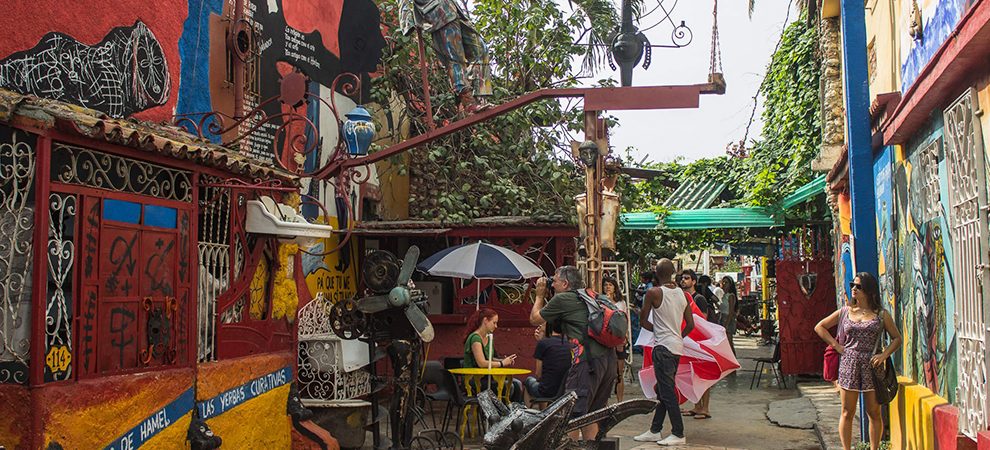El Callejón de Hamel is one of the emblematic sites of Havana. Located between Aramburu and Hospital streets, in Cayo Hueso neighborhood in Centro Habana, it owes its name to the American-Franco-German Fernando Belleau de Hamel, arms carrier during the Civil War (1861-1865) that then settled in that place.
When talking about El Callejón de Hamel, we must refer to the Cuban sculptor and muralist Salvador González Escalona, who was in charge of spreading in this small space the rich cultural heritage bequeathed by black slaves.
The project began on April 21st, 1990, when one of the alley’s neighbors asked González Escalona to paint the facade of his house. The artist, seeing the state of other facades, took them as a canvas to portray his art.
Several sites devoted to promote tourist attractions place this Alley as a not-to-miss destination for those visitors interested in Afro-Cuban culture.

The public influx happens in an organic way, because everyone, national and foreign, knowing of its existence, fails to resist the seductive power of the singular, cosmopolitan and lively enclave of the Capital of Cuba.
El Callejón de Hamel, with its murals and teachings has become a great art gallery that also serves as an exhibition place for dissimilar cultural projects that take the Cuban and his beliefs by flag.
This happens because it is also El Callejón de la Rumba, where the sole ring of a drum is enough to make the party transcend. Beyond the colorful paintings in the buildings, the phrases written in stone and the little rituals, the dance occupies a special place in this space that rescues the Afro-Cuban culture.
El Callejón de Hamel is, by right, a critical point of the city’s cultural route. Seating place for the perennial Cuban party, home for those who love joy.































Comments
Add a comment